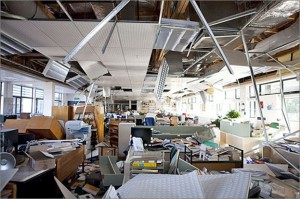When planning for an emergency the rule of thumb is to plan for the “worst case scenario.” Out here on the west coast we always hear all this earthquake talk…the big one is coming…expect the unexpected.
Much of the concern centers on school safety, preparing a household kit, there is less discussion on how your business if going to be affected. The rule of thumb is for households to be able to manage without help for 72 hours after an emergency. Whether it be flood, earthquake or any other natural disaster. However, businesses really need to be prepared to survive for a lot longer than that. Businesses require more resources than you would expect to remain operational. We have to assume airports will be closed, bridges will be inaccessible and infrastructure will be compromised.
According to the Toronto based Institute for Catastrophic Loss Reduction, “A quarter of businesses that close because of natural disaster never reopen.” It also says businesses with fewer than 10 employees are “especially vulnerable.”
FACT: Vancouver is at risk for a major earthquake.
According to Barbara Yaffe, a reporter for the Vancouver Sun, “Companies in this city that prepare for a Big One will have a much better chance of reopening and surviving financially.”
We at SOS understand that employers might have a hard time investing time and money in disaster planning when they are concerned about meeting the next payroll – but making the decision to be prepared now will aid local business should a natural disaster occur. The loss of jobs, life and property is a reality if businesses do not take the time to invest and plan properly. With a 1/3 of our time spent at work many of us could find ourselves at work when an earthquake hits.
Does your office have a plan? supplies?

